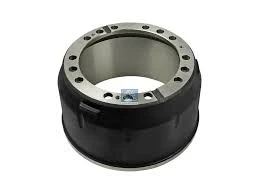
-
 Afrikaans
Afrikaans -
 Albanian
Albanian -
 Amharic
Amharic -
 Arabic
Arabic -
 Armenian
Armenian -
 Azerbaijani
Azerbaijani -
 Basque
Basque -
 Belarusian
Belarusian -
 Bengali
Bengali -
 Bosnian
Bosnian -
 Bulgarian
Bulgarian -
 Catalan
Catalan -
 Cebuano
Cebuano -
 Corsican
Corsican -
 Croatian
Croatian -
 Czech
Czech -
 Danish
Danish -
 Dutch
Dutch -
 ភាសាអង់គ្លេស
ភាសាអង់គ្លេស -
 Esperanto
Esperanto -
 Estonian
Estonian -
 Finnish
Finnish -
 French
French -
 Frisian
Frisian -
 Galician
Galician -
 Georgian
Georgian -
 German
German -
 Greek
Greek -
 Gujarati
Gujarati -
 Haitian Creole
Haitian Creole -
 hausa
hausa -
 hawaiian
hawaiian -
 Hebrew
Hebrew -
 Hindi
Hindi -
 Miao
Miao -
 Hungarian
Hungarian -
 Icelandic
Icelandic -
 igbo
igbo -
 Indonesian
Indonesian -
 irish
irish -
 Italian
Italian -
 Japanese
Japanese -
 Javanese
Javanese -
 Kannada
Kannada -
 kazakh
kazakh -
 Khmer
Khmer -
 Rwandese
Rwandese -
 Korean
Korean -
 Kurdish
Kurdish -
 Kyrgyz
Kyrgyz -
 Lao
Lao -
 Latin
Latin -
 Latvian
Latvian -
 Lithuanian
Lithuanian -
 Luxembourgish
Luxembourgish -
 Macedonian
Macedonian -
 Malgashi
Malgashi -
 Malay
Malay -
 Malayalam
Malayalam -
 Maltese
Maltese -
 Maori
Maori -
 Marathi
Marathi -
 Mongolian
Mongolian -
 Myanmar
Myanmar -
 Nepali
Nepali -
 Norwegian
Norwegian -
 Norwegian
Norwegian -
 Occitan
Occitan -
 Pashto
Pashto -
 Persian
Persian -
 Polish
Polish -
 Portuguese
Portuguese -
 Punjabi
Punjabi -
 Romanian
Romanian -
 Russian
Russian -
 Samoan
Samoan -
 Scottish Gaelic
Scottish Gaelic -
 Serbian
Serbian -
 Sesotho
Sesotho -
 Shona
Shona -
 Sindhi
Sindhi -
 Sinhala
Sinhala -
 Slovak
Slovak -
 Slovenian
Slovenian -
 Somali
Somali -
 Spanish
Spanish -
 Sundanese
Sundanese -
 Swahili
Swahili -
 Swedish
Swedish -
 Tagalog
Tagalog -
 Tajik
Tajik -
 Tamil
Tamil -
 Tatar
Tatar -
 Telugu
Telugu -
 Thai
Thai -
 Turkish
Turkish -
 Turkmen
Turkmen -
 Ukrainian
Ukrainian -
 Urdu
Urdu -
 Uighur
Uighur -
 Uzbek
Uzbek -
 Vietnamese
Vietnamese -
 Welsh
Welsh -
 Bantu
Bantu -
 Yiddish
Yiddish -
 Yoruba
Yoruba -
 Zulu
Zulu
drum brakes wiki
Understanding Drum Brakes Mechanism and Importance
Drum brakes have been a fundamental component of vehicle braking systems for over a century. Widely used in both front and rear braking systems, they operate on a principle that has proven to be effective, reliable, and cost-efficient. This article delves into the mechanism, advantages, and disadvantages of drum brakes, offering insight into why they have maintained popularity in certain applications.
How Drum Brakes Work
At the heart of the drum brake system is the brake drum, a cylindrical component attached to the wheel. Inside this drum are brake shoes that are coated with friction material. When the driver presses the brake pedal, hydraulic pressure is created, sending fluid to the brake cylinder located at the top of the drum. This pressure forces the brake shoes outward against the inner surface of the drum. The resulting friction slows down the rotation of the wheel, effectively bringing the vehicle to a stop.
The design of drum brakes allows for significant surface area contact between the shoes and the drum, which means they can generate considerable stopping power. The enclosed nature of the system protects the components from dirt and water, making drum brakes less susceptible to wear in certain environments.
Advantages of Drum Brakes
One of the significant advantages of drum brakes is their cost-effectiveness. The manufacturing process for drum brakes is generally less expensive compared to disc brakes, enabling them to be a popular choice for many manufacturers, especially in budget-friendly vehicles.
Drum brakes also offer excellent performance in terms of initial braking. They provide a strong stopping force, which can be particularly beneficial in heavier vehicles, such as trucks and buses, where additional braking power is required. Furthermore, due to their design, drum brakes can effectively dissipate heat, allowing for extended performance without overheating.
drum brakes wiki

The enclosed design of drum brakes helps protect the operating components from environmental elements, thus extending their lifespan in certain applications, especially in areas with adverse weather conditions.
Disadvantages of Drum Brakes
Despite their advantages, drum brakes also come with several drawbacks. One of the most notable issues is their tendency to experience brake fade, particularly during prolonged use or when used aggressively. As the brake shoes generate heat during friction, this heat can build up and lead to reduced braking performance—a phenomenon less prevalent in disc brakes.
Another disadvantage is the maintenance aspect. While drum brakes are generally durable, replacing the pads and other components can be more labor-intensive than in disc brake systems. This can result in higher labor costs for vehicle maintenance.
Moreover, drum brakes are typically heavier than disc brakes, which can impact a vehicle's overall weight and efficiency. In performance applications, this additional weight can lead to decreased fuel efficiency and handling capabilities.
Conclusion
In summary, drum brakes are a crucial component in the landscape of automotive braking systems. While they have their advantages, such as cost-effectiveness, excellent initial braking power, and protection against environmental elements, they also present some challenges, including brake fade and potentially higher maintenance needs. As technology progresses, the debate between drum brakes and their disc counterparts continues, but for many vehicles, especially commercial and budget-conscious options, drum brakes remain a viable solution that has stood the test of time.
-
Rear Drum Brakes Maintenance Tipsព័ត៌មានAug.04,2025
-
Key Components Affecting Brake Drum Functionព័ត៌មានAug.04,2025
-
Important Inspection for Truck Drum Brakeព័ត៌មានAug.04,2025
-
How to Prepare for Changing Rear Drum Brakesព័ត៌មានAug.04,2025
-
Essential Tools for Cleaning Drum Brakes Properlyព័ត៌មានAug.04,2025
-
Brake Drum Function Guideព័ត៌មានAug.04,2025
-
Safety Features of Red Brake Drumsព័ត៌មានAug.01,2025
